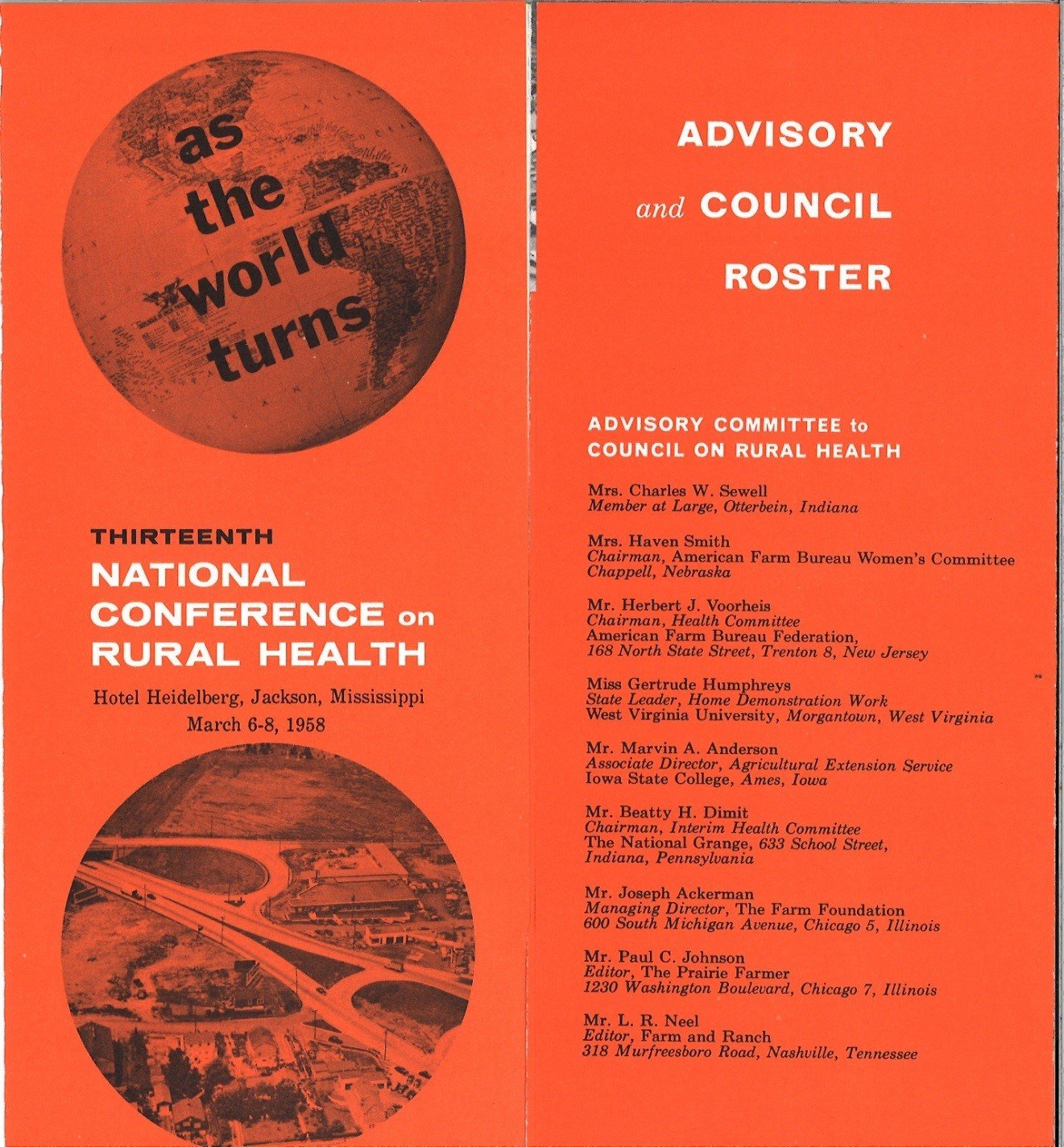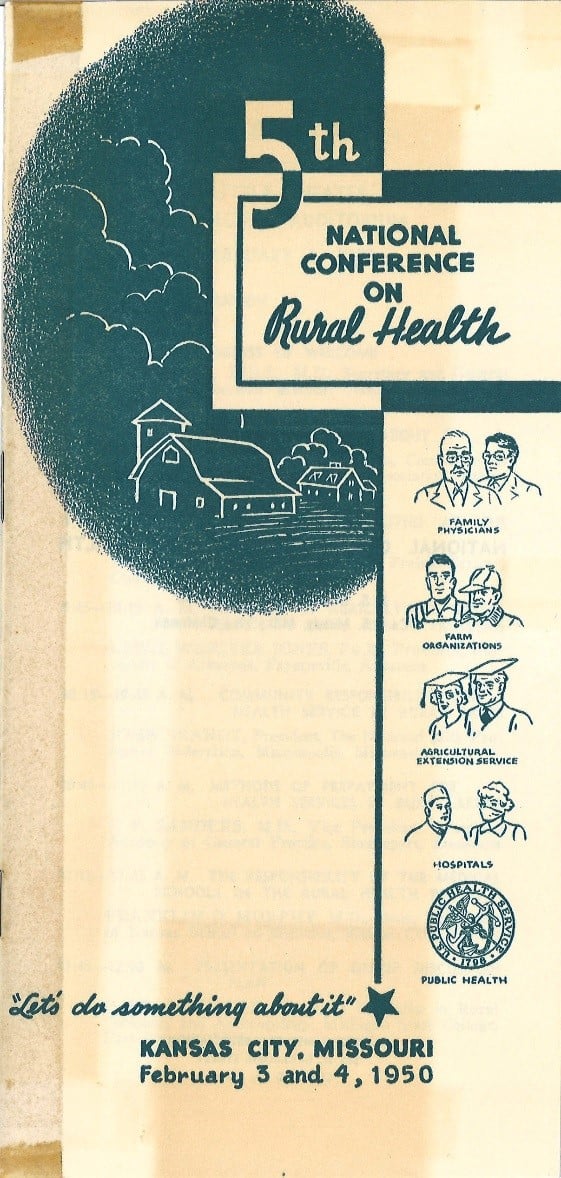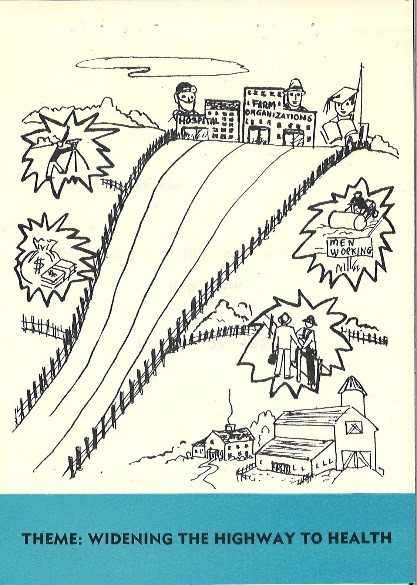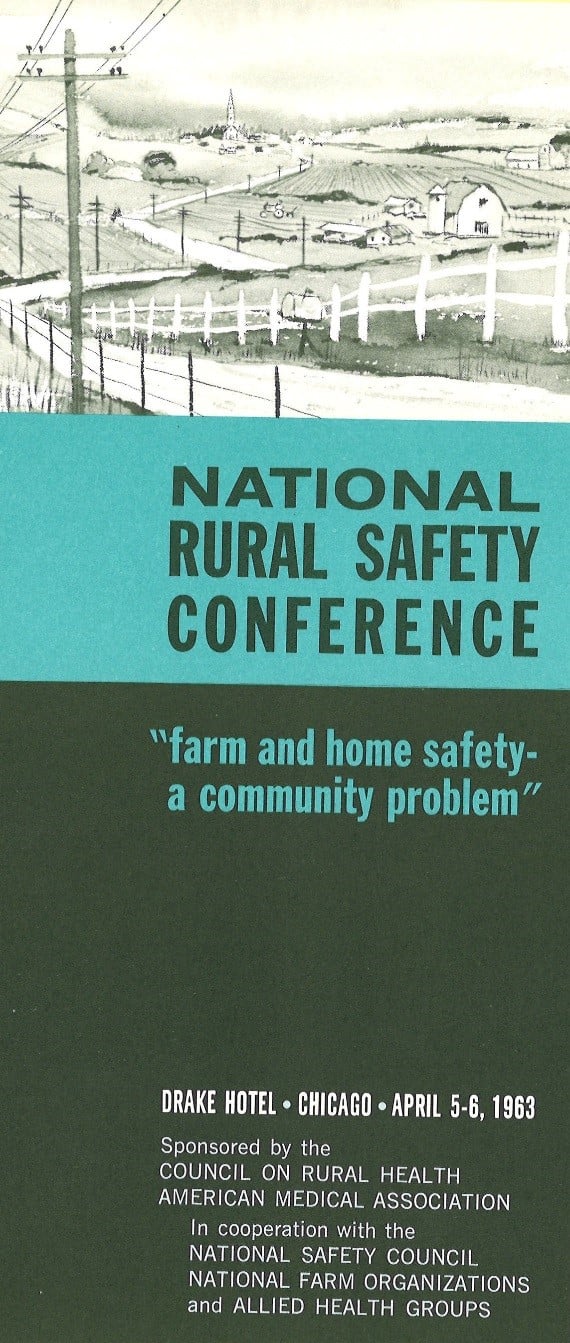Abstract
The Council on Rural Health (1945-1975) of the American Medical Association (AMA) collaborated with domestic health care organizations in the mid-20th century to improve access to health care in rural areas. This council promoted health and farm safety education, public health measures, insurance plans, and construction of health facilities. It also lobbied state and county medical societies to form rural health committees. AMA archive materials document these activities and demonstrate physicians’ involvement and investment in the communities they served.
Figure 1. National Conference on Rural Health program, 1958

Courtesy of the American Medical Association Archives.1
The Conference on Rural Health was the culmination of hard work by farm women, led by Edna Sewell of Otterbein, Indiana. Sewell, director of the Associated Women of the American Farm Bureau Federation, recognized the need for better health care in rural areas and engaged the medical profession. Because of her efforts, the American Medical Association (AMA) set up the Council on Rural Health (CRH) in 1945 to address rural health needs through annual conferences and community health councils. The council also helped connect rural physicians throughout the country. Although the CRH was disbanded in 1975, it helped to prepare rural health care for dramatic changes to health care in the United States over the next 30 years.
Figure 2. National Conference on Rural Health program, 1950

Courtesy of the American Medical Association Archives.2
Supported by the National Grange of the Order of Patrons of Husbandry, or “the Grange” for short, the CRH originated in 1945 as the Committee on Rural Medical Service and became an AMA council in 1951. The Grange is a community organization in the United States with roots in agriculture. Founded in 1867, the Grange promotes the economic and political well-being of the agricultural community. From its inception, the Grange advocated for farmers’ causes such as rural access, rural postal delivery, and bringing electricity to the rural areas of the United States. The CRH complemented the Grange’s goals by actively promoting health and farm safety education and sponsoring annual rural health conferences, public health measures in rural areas, insurance plans, and construction of health facilities. The CRH also lobbied state and county medical societies to form rural health committees.
By the sixth meeting of the council, in 1950, the CRH felt it was nearing solutions put forth by rural communities. Whereas the farming communities viewed getting a physician into the village as the biggest hurdle to health care, the AMA viewed the personnel shortage as only one of several issues. The AMA emphasized the difference between health and medical care and focused on personal and community responsibilities for health, including proper diet, sanitation, safe surroundings, and immunizations against preventable disease. Without citizens’ knowledge of these responsibilities for health, physicians and nurses would be less effective. The CRH reported that “the physician is helpless unless the public is educated to these facts.”3 The CRH advised that local health councils are good channels for teaching health to rural citizens.
Figure 3. National Conference on Rural Health program, 1953

Courtesy of the American Medical Association Archives.4
Conference conversations centered on community health councils as a way to channel medical guidance to the rural public. Local rural councils included civic, agricultural, professional, municipal, and religious-based public health efforts. Veterans groups, women’s groups, the Red Cross, and others also promoted communities’ engagement in rural health.
Figure 4. National Rural Safety program, 1963

Courtesy of the American Medical Archives.5
The CRH, in cooperation with the National Safety Council, national farm organizations, and allied health groups, sponsored a National Rural Health Safety Conference held in Chicago, Illinois, April 5-6, 1963. The theme of the conference was community-based approaches to farm and home safety. A major goal of the conference was to help improve communication between individuals and groups interested in rural health and safety problems. During the conference, national organizations made reports available about resources that could be disseminated by state and community groups. Farm equipment manufacturers also attended to promote their newest safety devices and offer demonstrations pertaining to health and safety. Of note was a panel session, “Rural Safety as Seen by: A Practicing Physician, a Psychologist, a Psychiatrist, and an Orthopedic Surgeon.”
References
-
American Medical Association. National Conference on Rural Health program. 1958. Council on Rural Health Collection, Series 63; Box 22-4. Chicago, IL: American Medical Association Archives.
-
American Medical Association. National Conference on Rural Health program. 1950. Council on Rural Health Collection, Series 63; Box 22-1. Chicago, IL: American Medical Association Archives.
-
American Medical Association. Clinical session. In: Proceedings from the House of Delegates of the American Medical Association; December 4-7, 1951; Chicago, IL. https://ama.nmtvault.com/jsp/viewer.jsp?doc_id=ama_arch%2FHOD00001%2F00000050&page_name=28. Accessed November 14, 2018.
-
American Medical Association. National Conference on Rural Health program. 1953. Council on Rural Health Collection, Series 63; Box 22-2. Chicago, IL: American Medical Association Archives.
-
American Medical Association. National Conference on Rural Health program. 1963. Council on Rural Health Collection, Series 64; Box 22-10. Chicago, IL: American Medical Association Archives.



